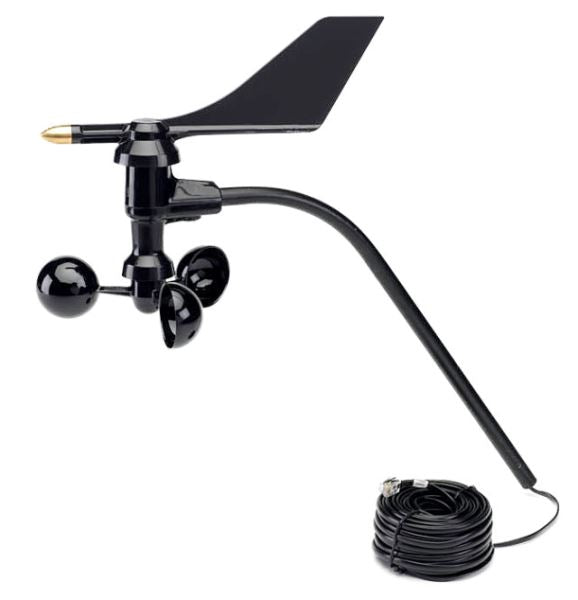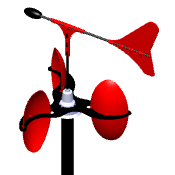Why an Anemometer is Vital for Your Environmental Data Collection
Why an Anemometer is Vital for Your Environmental Data Collection
Blog Article
All You Required to Learn About Anemometers: How They Function, Why They Matter, and Where to Use Them
Anemometers, though usually neglected in the world of clinical instruments, play a critical role in different areas, offering beneficial insights right into wind speed and air movement patterns. As we dig into the complexities of anemometer modern technology, we will certainly uncover the internal workings of these devices, their relevance, and the key factors to consider when selecting the appropriate anemometer for certain applications.

Anemometer Essentials
A crucial instrument used to determine wind rate and direction, the anemometer plays a crucial role in weather forecasting and numerous industries. An anemometer generally contains three or four cups that turn in the wind, a vane that points into the wind, and sensing units to track the turnings or movements. By calculating the rotations or motions over a specific time duration, the anemometer can establish wind rate. The vane assists determine wind direction by pointing into the wind, supplying important data for climate projecting, air travel, maritime procedures, environmental tracking, and wind energy applications.
There are different kinds of anemometers offered, including mug anemometers, vane anemometers, hot-wire anemometers, and sonic anemometers, each with its unique attributes and applications. Cup anemometers are generally utilized for standard wind speed dimensions, while vane anemometers are preferred for directional measurements. Hot-wire anemometers are ideal for low airspeeds, and sonic anemometers are excellent for high-precision measurements in study and industrial setups. Understanding the fundamentals of anemometers is important for accurate wind data collection and evaluation across different markets.
Concepts of Anemometer Operation
Structure on the fundamental understanding of anemometer fundamentals, the concepts of anemometer procedure elucidate the mechanics behind wind speed and direction dimensions. Mug anemometers, for instance, have three or even more cups that capture the wind, creating them to spin faster as the wind rate boosts. Hot-wire anemometers rely on a warmed wire that cools down as wind passes over it, with the price of cooling determining the wind rate.
Relevance of Anemometers
Anemometers play a vital duty in gauging wind rate and instructions, giving essential data for weather forecasting, climate studies, ecological surveillance, and aeronautics procedures. Meteorologists count on anemometers to collect precise wind data, aiding them comprehend weather condition patterns, forecast storms, and concern prompt warnings to the public. Wind farm operators utilize anemometers to assess wind conditions and optimize power production from wind generators.
Applications Across Numerous Industries
In the renewable energy sector, anemometers play a critical duty in evaluating wind conditions for wind farm placements, making certain ideal energy production. Industries like construction and mining make use of anemometers to monitor wind speeds, crucial for security methods, especially when functioning at elevations or in open-pit mines where solid winds can posture threats. In farming, anemometers help farmers in handling crop spraying by giving real-time information on wind speed to avoid drift.

Selecting the Right Anemometer for Your Demands
Selecting the proper anemometer customized to your details requirements is vital for getting exact wind rate and instructions dimensions. When choosing an anemometer, think about variables such as the desired application, required measurement range, environmental problems, and desired functions. For basic functions, a cup anemometer is ideal for measuring wind speed, while a vane anemometer offers wind instructions information. Hot-wire anemometers are suitable for reduced airspeed dimensions, and ultrasonic anemometers supply high precision and resilience.

Verdict
Finally, anemometers play a critical function in measuring wind rate and instructions across numerous industries. Recognizing the concepts of anemometer operation is crucial for choosing the my explanation right tool for particular needs. From weather forecasting to aviation, anemometers are essential tools for collecting precise data and making sure safety in various applications. It is necessary to take into consideration the importance of anemometers in order to make enlightened decisions when picking one of the most suitable tool for measuring wind conditions.
There are various types of anemometers available, including cup anemometers, vane anemometers, hot-wire anemometers, and sonic anemometers, each with its unique functions and applications. Mug anemometers are frequently used for basic wind speed measurements, while vane anemometers are chosen for directional measurements. Hot-wire anemometers are appropriate for reduced airspeeds, and look at this site sonic anemometers are suitable for high-precision measurements in study and industrial setups.Structure on the fundamental understanding of anemometer essentials, the concepts of anemometer procedure illuminate the auto mechanics behind wind rate and look at this web-site instructions dimensions. For basic functions, a cup anemometer is appropriate for determining wind speed, while a vane anemometer offers wind direction information.
Report this page